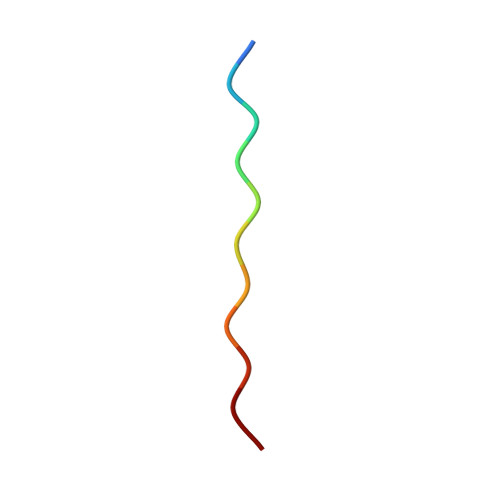Atomic-level evidence for packing and positional amyloid polymorphism by segment from TDP-43 RRM2.
Guenther, E.L., Ge, P., Trinh, H., Sawaya, M.R., Cascio, D., Boyer, D.R., Gonen, T., Zhou, Z.H., Eisenberg, D.S.(2018) Nat Struct Mol Biol 25: 311-319
- PubMed: 29531287
- DOI: https://doi.org/10.1038/s41594-018-0045-5
- Primary Citation of Related Structures:
5W50, 5W52, 5W7V - PubMed Abstract:
Proteins in the fibrous amyloid state are a major hallmark of neurodegenerative disease. Understanding the multiple conformations, or polymorphs, of amyloid proteins at the molecular level is a challenge of amyloid research. Here, we detail the wide range of polymorphs formed by a segment of human TAR DNA-binding protein 43 (TDP-43) as a model for the polymorphic capabilities of pathological amyloid aggregation. Using X-ray diffraction, microelectron diffraction (MicroED) and single-particle cryo-EM, we show that the 247 DLIIKGISVHI 257 segment from the second RNA-recognition motif (RRM2) forms an array of amyloid polymorphs. These associations include seven distinct interfaces displaying five different symmetry classes of steric zippers. Additionally, we find that this segment can adopt three different backbone conformations that contribute to its polymorphic capabilities. The polymorphic nature of this segment illustrates at the molecular level how amyloid proteins can form diverse fibril structures.
- Howard Hughes Medical Institute, University of California, Los Angeles, Los Angeles, CA, USA.
Organizational Affiliation:
















